Information and Interpretation in Art, Design and Media
Homage Research
http://en.wikipedia.org/wiki/Homage
Homage (pron.: /ˈhɒmɨdʒ/ or /ˈɒmɨdʒ/) is a show or demonstration of respect or dedication to someone or something, sometimes by simple declaration but often by some more oblique reference, artistic or poetic.
http://dictionary.reference.com/browse/homage
hom·age[hom-ij, om-]
noun
1.
respect or reverence paid or rendered: In his speech he paid homage to Washington and Jefferson.
2.
the formal public acknowledgment by which a feudal tenant or vassal declared himself to be the man or vassal of his lord, owing him fealty and service.
3.
the relation thus established of a vassal to his lord.
4.
something done or given in acknowledgment or consideration of the worth of another: a Festschrift presented as an homage to a great teacher.
Origin:
1250–1300; Middle English ( h ) omage < Old French, equivalent to ( h ) ome man (< Latin hominem, accusative of homō; see Homo) + -age -age
Synonyms
1. deference, obeisance; honor, tribute. 3. fidelity, loyalty, devotion.
Antonyms
1. irreverence. 3. disloyalty.
Task 1 – Identify Individual – Martin Scorsese
NAME: Martin Charles Scorsese
D/O/B: 17th November 1942
AGE: 71
PLACE OF BIRTH: Queens, New York City, USA
NATIONALITY: Italian American
PROFESSION: Director, Film Maker, Screenwriter, Producer, Occasional Actor
YEARS ACTIVE: 1963 –
FILMOGRAPHY:
Who’s That Knocking At My Door (1967) – Director/Writer
Boxcar Bertha (1972) – Director
Mean Streets (1973) – Director/Writer/Producer
Alice Doesn’t Live Here Anymore (1974) – Director
Taxi Driver (1976) – Director
New York, New York (1977) – Director
Raging Bull (1980) – Director/Writer
The King of Comedy (1983) – Director
After Hours (1985) – Director
The Colour of Money (1986) – Director
The Last Temptation of Christ (1988) – Director/Writer
GoodFellas (1990) – Director/Writer/Producer
Cape Fear (1991) – Director
The Age of Innocence (1993) – Director/Writer
Casino (1995) – Director/Writer
Kundun (1997) – Director
Bringing Out The Dead (1999) – Director
Gangs of New York (2002) – Director
The Aviator (2004) – Director
The Departed (2006) – Director
Shine A Light (2008) – Director
Shutter Island (2010) – Director/Producer
Hugo (2011) – Director/Producer
The Wolf of Wall Street (2013) – Director/Producer
AWARDS:
1974 – ‘Alice Doesn’t Live Here Anymore’
- Academy Award for Best Actress: Ellen Burstyn
- BAFTA Award for Best Film
- BAFTA Award for Best Actress in a Leading Role: Ellen Burstyn
- BAFTA Award for Best Actress in a Supporting Role: Diane Ladd
1976 – ‘Taxi Driver’
- Cannes Film Festival – Palme d’Or
- BAFTA Award for Best Actress in a Supporting Role: Jodie Foster
- BAFTA Award for Best Film Music: Bernard Herrmann
- BAFTA Award for Best Newcomer: Jodie Foster
1980 – ‘Raging Bull’
- Academy Award for Best Actor: Robert De Niro
- Academy Award for Best Film Editing: Thelma Schoonmaker
- BAFTA Award for Best Newcomer: Joe Pesci
- BAFTA Award for Best Editing: Thelma Schoonmaker
- Golden Globe Award for Best Actor – Motion Picture Drama: Robert De Niro
1985 – ‘After Hours’
- Best Director Award (Cannes Film Festival)
1986 – ‘The Color of Money’
- Academy Award for Best Actor: Paul Newman
1990 – ‘Goodfellas’
- Academy Award for Best Supporting Actor: Joe Pesci
- BAFTA Award for Best Film
- BAFTA Award for Best Direction
- BAFTA Award for Best Adapted Screenplay: Martin Scorsese, Nicholas Pileggi
- BAFTA Award for Best Editing: Thelma Schoonmaker
- BAFTA Award for Best Costume Design: Richard Bruno
- Venice Film Festival: Silver Lion for Best Director
1993 – ‘The Age of Innocence’
- Academy Award for Best Costume Design: Gabriella Pescucci
- BAFTA Award for Best Actress in a Supporting Role: Miriam Margolyes
- Golden Globe Award for Best Supporting Actress – Motion Picture: Miriam Margolyes
1995 – ‘The Age of Innocence’
- Golden Globe Award for Best Actress – Motion Picture Drama: Sharon Stone
2002 – Gangs of New York
- BAFTA Award for Best Actor in a Leading Role: Daniel Day-Lewis
- Golden Globe Award for Best Director
- Golden Globe Award for Best Original Song: U2 for the The Hands That Built America
2004 – ‘The Aviator’
- Academy Award for Best Supporting Actress: Cate Blanchett
- Academy Award for Best Film Editing: Thelma Schoonmaker
- Academy Award for Best Cinematography: Robert Richardson
- Academy Award for Best Costume Design: Sandy Powell
- Academy Award for Best Art Direction: Dante Ferretti and Francesca Lo Schiavo
- BAFTA Award for Best Film
- BAFTA Award for Best Actress in a Supporting Role: Cate Blanchett
- BAFTA Award for Best Production Design: Dante Ferretti
- Golden Globe Award for Best Motion Picture – Drama
- Golden Globe Award for Best Actor – Motion Picture Drama: Leonardo DiCaprio
- Golden Globe Award for Best Original Score: Howard Shore
2006 – ‘The Departed’
- Academy Award for Best Picture
- Academy Award for Best Director
- Academy Award for Best Adapted Screenplay: William Monahan
- Academy Award for Best Film Editing: Thelma Schoonmaker
- Golden Globe Award for Best Director
2011 – ‘Hugo’
- Academy Award for Best Cinematography: Robert Richardson
- Academy Award for Best Art Direction: Dante Ferretti and Francesca Lo Schiavo
- Academy Award for Best Visual Effects: Robert Legato
- BAFTA Award for Best Production Design: Dante Ferretti and Francesca Lo Schiavo
- Golden Globe Award for Best Director
Task 2 – Personal Study
For this assignment I was asked to conduct a personal study and identify a film director / film maker whose works inspires me as a up-and-coming film director. I chose to study film director Martin Scorsese in this assignment and showcase all the different film genres and elements that he has bought to the film industry.
Martin Scorsese; a film director, screenwriter, producer and occasional actor is a legendary piece to the film industry, directing and producing 24 successful and influential films over the last 4 decades. Contributing to film, television, short movies and documentaries, he has highlighted and widened opinions on particular subjects that included crime, Italian culture and mob/mafia relations. His contribution to film has seen his best work praised by film critics and up-and-coming film makers worldwide. He has been awarded Academy Awards, Golden Globes, the Palme d’or Award, Emmy Awards and the DGA Award. He remains as one of the greatest film directors of all time.
Scorsese’s body of work consistently flows around Italian culture. In majority of his movies he often chooses Italian actors like Robert De Niro, Joe Pesci and Ray Liotta to portray the lives of young and old hardworking Italian people whose lives is a daily struggle and try to survive by doing something illegal or live on a dream. Scorsese mainly features violence in his films. This is what captivates the audience in a good way. The way that he expresses violence and crime in his films is not in a gruesome and overly powering kind of way. He simply shows the audience the reality of certain violent situations. Unlike most Hollywood films, his violent scenes are never a big huge production. This keeps that sense of reality to the film. Scorsese manages to capture that essence of old school hardship with new school style whilst still managing to keep his movies fresh and interesting. His style of directing seems to very different from most directors as he often includes tracking shots into his films in which the camera moves along a track in order to track an action or reveal a scene. By doing this Scorsese is cleverly drawing the viewer into a more intense relationship with the character or subject.
Besides his intriguing story lines and amazing visionary that is featured throughout his films, it’s his directorial trademarks that make him popular and influential. The way that he can adapt a real story and put his own visionary twist on it and turn it some of the world’s greatest films are amazing. A vast majority of Scorsese’s films are based in New York City where Scorsese originates from. I personally believe his reason for this is so he can personally relate to his films on a deeper level. Having the film featured in New York City is his own personal connection to the film. Mean Streets, Gangs of New York, Taxi Driver and the Age of Innocence are all films that were all based in New York. In some way you could argue that he is visually telling parts of his real life story through the aesthetics in his films. He was born and raised on the streets of New York and maybe crime and violence is what he grew up seeing. Another one of Scorsese’s trademarks in films is to always feature a corrupt authority figure. A proportion of his films feature a character that dominates the film. This character doesn’t necessarily have to be the protagonist of the film but however most times they usually are. In Gangs of New York; Bill the Butcher who is played by Daniel Day Lewis dominates the film despite Leonardo DiCaprio’s being the actual protagonist of the film. Bill the Butcher is probably the most memorable character throughout the film. This same movement of having a corrupt authority figure is featured in Scorsese’s 2006 crime/thriller film The Departed. Once again Leonardo DiCaprio plays the lead protagonist whilst Matt Damon’s character Staff Sergeant Colin Sullivan takes the supporting role.
Collaborations are a key trademark to Scorsese’s films. He often collaborates with Robert De Niro and Leonardo DiCaprio; two of Hollywood’s leading actors. His consistent collaborations are what make a Scorsese film special because the audience is used to seeing De Niro or DiCaprio in one of his films. Other actors who have made multiple appearances in Scorsese films are Harry Northup, Victor Argo, Joe Pesci and Harvey Keitel. It’s not just actors that Scorsese consistently works with as he has collaborated with Editor Thelma Schoonmaker 15 times and Director of Photography Michael Ballhaus 7 times. Scorsese often makes quick cameos in own films. He has made brief appearances in Mean Streets, Hugo, Gangs of New York and Casino. This could be seen as him leaving his own little mark in his films. In relation to leaving him own little stamp or mark in his films, Scorsese has several different director trademarks that he sometimes incorporates in his films such as betrayal and guilt often being themes in many of his films, a large majority of his films being based in New York, The Rolling Stones 1969 ‘Gimme Shelter’ is heard several times in many of Scorsese’s films such as Goodfellas and The Departed and the lead female character in the film (who sometime throughout the films become the wife of the protagonist) is always seen as the peacemaker and an angelic character who sometimes saves the day.
A few of Scorsese’s films are often inspired or adapted from a true story. Successful blockbuster films that he has directed like Goodfellas and Raging Bull are two very inspiring and realistic films that historically link to real life events. With this the lead characters in Scorsese’s films are always prone to violence or a surrounded by violence. This is keeping that slice of realism to the adaption. With films like The Departed, Gangs of New York, Casino, Cape Fear, Goodfellas, Raging Bull & Taxi Driver the lead character always has the first and last word in whatever the story line situation maybe. Scorsese’s representation of modern gangsters has created somewhat of a platform for other gangster/mob related films as no one else has managed to represent the gangster/crime lifestyle to an audience the way that Scorsese does. Audiences always love the ‘bad guy’ especially when it comes to gangster films and what Scorsese manages to do so well is mix two different lifestyles and portray them as one. The lifestyle that is portrayed in many of his gangster films is a dark grimy modern gangster crime lifestyle which is heavily mixed with a glamorous and wealthy lifestyle. This is often portrayed in many gangster movies. Goodfellas; for instance portrays this lifestyle several different times throughout the movie. One particular scene which exploits the lifestyle to the fullest is the scene where Henry and his wife Karen are seen arriving at the nightclub. In this scene you really get a taste into what the gangster life could possibly be like. Some may argue this point and say that Scorsese has exaggerated the glamorous and wealthy lifestyle that is portrayed however it is commonly known around the world that gangsters and there wives live there life this way. When Henry and Karen arrive at the club, instead of standing and waiting in line like the rest of the characters in the film Henry guides his wife to the downstairs private kitchen area where you can see the food being made. This particular movement is known amongst everyone as a sign of being wealthy and being an important person. Taking into consideration that his character moves like a boss and is involved in mafia related topics, he is instantly seen as an important person. As they finally arrive at the restaurant area, a table is made and prepared for Karen and Henry. In this scene you also witness Henry flaunting his wealth by paying of the workers of restaurant so that he has the access to go through to the kitchen area.
Scorsese has created such an impact amongst a lot of people within the film industry and those out side of the industry. R&B Singer Ashanti recreated the Goodfellas movie in her 2002 music video Foolish. Actor Terrence Howard portrayed Henry Hill whilst Ashanti portrayed Karen Hill. Others in the video like Ja Rule and Irv Gotti portrayed different characters from the film like Jimmy Conway, Tommy DeVito and Paul Cicero. Not only do I feel like Scorsese shaped the film industry, I feel that he shaped the gangster crime genre. Without many of his films guiding our knowledge on the gangster crime life and exploring the truth behind real life characters and real life situations, the gangster crime genre would not be as big and tempting to watch and explore in today’s society.
In conclusion, when you look at all the films and witness the impact and influence that Martin Scorsese has had on the film industry, you can really see why he is well respected amongst his peers and the film industry. Not only has he made the genre ‘gangster crime’ more popular and intriguing to watch, he has really showcased just how far you can go when writing, directing or producing a film of that genre.
Bibliography:
http://en.wikipedia.org/wiki/Martin_Scorsese
http://www.imdb.com/name/nm0000217/
http://en.wikipedia.org/wiki/Goodfellas
http://en.wikipedia.org/wiki/The_Departed
http://en.wikipedia.org/wiki/Hugo_(film)
http://en.wikipedia.org/wiki/Casino_(film)
http://en.wikipedia.org/wiki/Gangs_of_New_York
Task 3 – Personal Position
Scorsese has molded the genre of crime by accommodating many different characteristics about the crime genre into his work. He is known for developing explosive story lines and he also has the ability to find an actor who can not only embody the role of the character but takes on the character like they are the actual character. Scorsese’s style doesn’t include huge theatrical elements like big explosions and over dramatic scenes although he has used these methods once in a while. All the elements that you think revolves around crime, Scorsese manages to add into his movies which provide the viewer with an image that not only satisfies the viewer but opens there minds to possibly exploring the genre. When you ask the question ‘what makes a crime film’, all you have to do is watch a Scorsese movie and you will found the answer. Scorsese’s films don’t just tell a story they evaluate the message with the story. Majority of people would just naturally assume that the crime genre revolves around gangsters and murder but the message behind the actual genre is so much more and Scorsese captures this by adding things that we think are a myth with the genre into the film. Films like GoodFellas display different themes like wealth, greed, love, betrayal and so much more. In each of Scorsese’s films he does display this. The main subjects in his films are always head strong individuals whose main goal throughout the film is to either solve a particular situation or make a situation worse. This is a signature move that Scorsese chooses to take with his characters. The element of being ruthless and fearless always displays in the characters whether they are real life characters of made up characters. The crime genre can be built in so many different ways yet Scorsese sticks to the simple method of introducing the main character(s), including the suspects into the sequence, add the crime, solving the crime, twisting the plot so the main character goes from being the suspect to the victim, an emotional twist or plot and ends with a happy ending or a disastrous ending. Scorsese is known for having memorable characters in his films so I have decided to create a video showcasing in my opinion the characters from his films which I feel are the most memorable. Scorsese himself quoted ‘I considered it a true cinematic challenge of working with a versatile actor such as Robert De Niro, who molds himself according to each character. The only other actor who matches his histrionic ability is Al Pacino’. I believe that this is the reason why Scorsese works closely with Robert De Niro. The characters that feature in this video are mainly the popular characters from Scorsese’s films. The characters which are featured in the video above are a young Henry Hill from GoodFellas, Inspector Gustave from Hugo, Sam “Ace” Rothstein from Casino, Hugo Cabret from Hugo, Jake LaMotta from Raging Bull, Bill “the Butcher” Cutting from Gangs of New York, a older Henry Hill from GoodFellas, Ginger McKenna Rothstein from Casino, Karen Hill from GoodFellas and Francis “Frank” Costello from The Departed. Not only does he stick to this method and make this method work but he makes the story from the method better. For my future projects, I plan to insert some of his methods of directing and producing into my style of work. There are certain attributes from Scorsese that I would like to incorporate into my own work in the future, for instance I love the way that Scorsese takes risks with controversial story lines which sometimes brings light to dark topics that a lot of people are not aware of. I admire the way he can develop such dictating and interesting characters and make them legendary characters within the film industry. For me to match his body of work I would need to conduct research from all different aspects of life and try to pitch an amazing story as well as characters. Having studied his style, I have already tried to incorporate some of his characteristics in my projects. I made a short film which was based around one character and I tried molding that character into being suspicious but having that overall effect of being the victim which is something that most of the characters in Scorsese’s films are like.
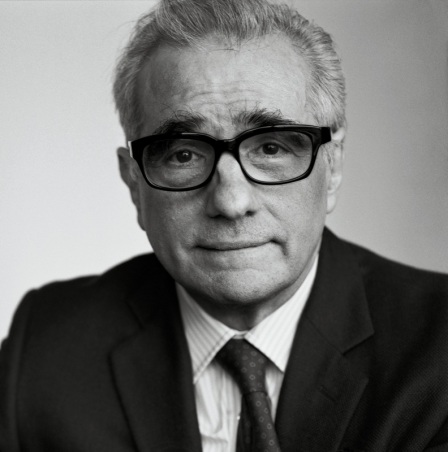
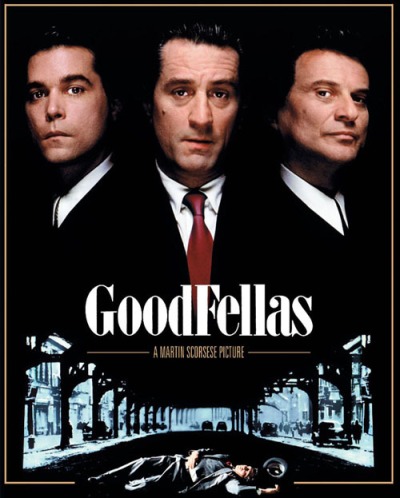
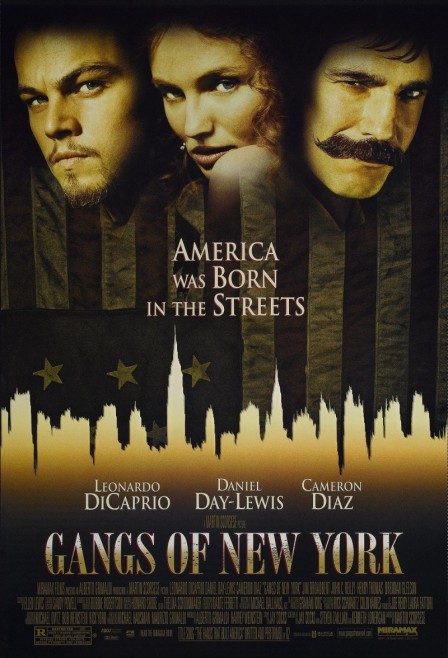
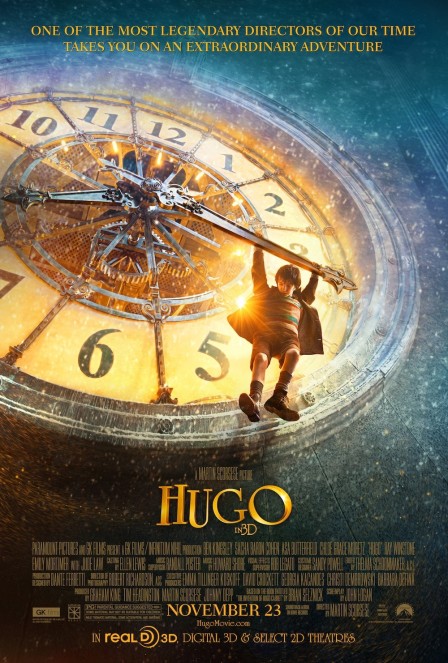
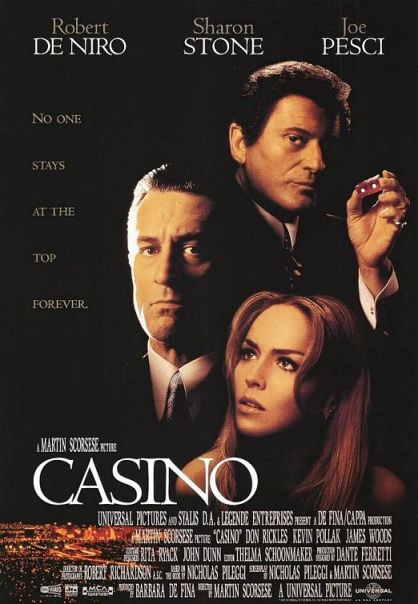
Good , thorough work. In task 3 try to be more specific about which of hiis characteristics you have incoprporated in your own work. Why don’t you add your short film to task 3 to illustrate how you’ve been influenced by his work ?